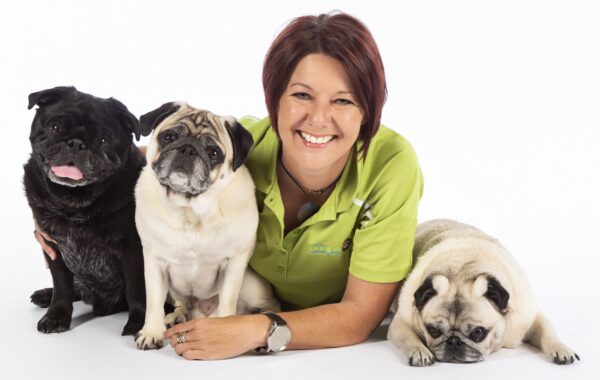As author and the founder of The Canine Perspective, she says that in the last financial year alone, nearly 17,500 dogs were taken in by the RSPCA.
Rutten says adopting a rescue dog can be life-changing and while some people may prove to be a perfect fit, for others, it may prove overwhelming — and that’s okay.
“Past neglect and abandonment can weigh heavily on rescue dogs – sometimes manifesting as reactivity, anxiety and unique needs that may not be the right fit for every home,” she says.
“Even puppies, while generally quicker to adapt if re-homed between the ages of seven and nine weeks, may still carry unseen trauma.
“As rewarding as adopting from a shelter can be, it’s crucial that your chosen pup suits your lifestyle, household and experience level as their guardian. Before adopting, you should ask yourself: ‘is a rescue dog the right fit for me’?”
Rutten says prospective rescue dog parents should ask themselves three questions:
- Do you have the time and emotional resources to build trust?
- Are you open to working with a trainer or behaviour expert if necessary?
- Is your household ready for the dog even if progress is slow?
For those who are ready, Rutten says the foundation of a strong relationship with a rescue dog lies in patience, structure and trust.
She also offers four tips to help your new dog adjust.
PATIENCE IS KEY: Trust cannot be rushed. “Many pups from shelters can arrive at their new homes in a shut-down and withdrawn state,” Rutten says.
“Once they start to relax in their new environment, cheeky, boundary-pushing behaviours may emerge – this is actually very mentally healthy and a sign that their nervous system is starting to settle.
“Be patient and make sure you use lots of treats and praise to reinforce the behaviours that you’d like to see repeated.”

BOND BEFORE TRAINING: Before expecting perfect recall or a great handshake, focus on strengthening the relationship with simple, positive interactions like snuggling calmly together on the couch.
“There’s a reason why many new dog parents struggle to get their rescue dogs to come when called,” Rutten says.
“It’s not the dog’s fault – it’s most likely that the human-dog bond hasn’t had a chance to fully form yet.”
A STRUCTURED ROUTINE: A clear, predictable daily routine provides a sense of stability for dogs coming from uncertain backgrounds.
“Dogs like routine – they feel safe and comforted when they know what to expect,” Rutten says. “If possible, try feeding and walking them at the same time each day to build that sense of security.”
CREATE A SAFE SPACE: every dog needs a safe space to retreat and decompress, even more so for rescue pups.
“Whether it’s a crate tucked away from the main living areas or a comfy corner, the goal is to create a calm, stress-free spot for your dog to rest without being disturbed,” Rutten says.
CHOOSING THE RIGHT PATH
Rutten says rescue dogs can thrive but they need adopters who are patient enough to let them heal one step at a time.
“There is no shame in thoughtfully choosing a dog from a registered, reputable breeder if that’s the best match for your situation instead,” she says.
“What matters most is making a compassionate, honest choice that will help ensure that every dog, whether rescued or purchased, finds a loving, stable, and lifelong home.”
For more expert dog behaviour and training advice from Rutten, visit her website at www.thecanineperspective.com.au






